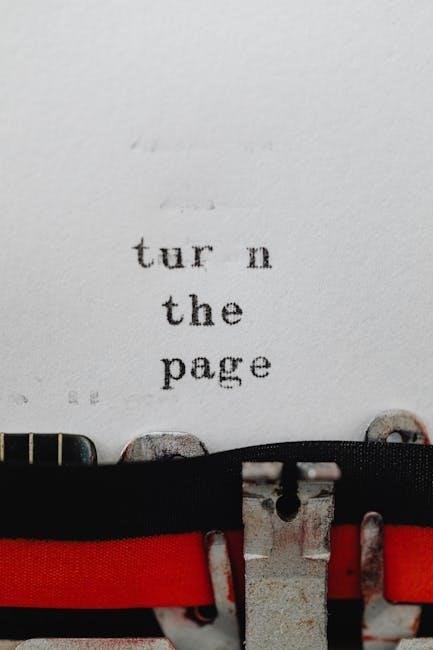Boss RE-202 Manual: A Comprehensive Guide
The BOSS RE-202 Space Echo is a legendary pedal, revered for its ability to conjure shimmering, spacious soundscapes reminiscent of classic tape echoes. This comprehensive guide will delve into its features, operation, and techniques to help you unlock its full potential.
The Boss RE-202 Space Echo is more than just a delay pedal; it’s a portal to a bygone era of warm, organic echo and reverb. Inspired by the iconic Roland RE-201 Space Echo, the RE-202 meticulously recreates the sought-after sound of its vintage predecessor, while incorporating modern features for enhanced versatility and control.
For musicians and audio enthusiasts seeking to capture the magic of classic tape delay, the RE-202 offers an authentic sonic experience. It faithfully emulates the characteristic warmth, saturation, and subtle imperfections that made the original RE-201 a studio staple. Beyond mere replication, the RE-202 expands upon the original’s capabilities, offering a wider range of delay times, enhanced modulation options, and convenient digital features like memory slots for storing your favorite settings.
Whether you’re aiming for subtle ambience, swirling psychedelic textures, or rhythmic tape delay patterns, the RE-202 provides the tools to shape your sound with precision and character. This guide will explore the pedal’s key features, panel controls, and advanced settings, empowering you to harness the full potential of this remarkable echo machine.
RE-202: Key Features and Specifications
The Boss RE-202 boasts a wealth of features designed to capture the essence of the original Space Echo while providing modern enhancements for today’s musicians. At its core, the RE-202 delivers authentic tape echo sounds, meticulously modeled after the RE-201, known for its warm and organic character. It offers a wide range of delay times, allowing for everything from subtle ambience to long, drawn-out echoes.
A key feature is its multi-head configuration, enabling users to create complex and rhythmic delay patterns. The RE-202 also includes a spring reverb emulation, adding another dimension of vintage-inspired ambience to your sound. Modern additions include memory slots for saving and recalling favorite settings, as well as expression pedal and footswitch control for real-time manipulation of parameters.
The RE-202 supports both mono and stereo operation, making it versatile for various setups. Its specifications include a robust build quality, ensuring reliability on stage and in the studio. With its combination of classic sound and modern functionality, the RE-202 stands as a powerful tool for any musician seeking the timeless appeal of tape echo.

Panel Descriptions: Top Panel Overview
The top panel of the Boss RE-202 is intuitively designed, providing immediate access to its core functions. Dominating the panel are the prominent control knobs, each meticulously crafted to emulate the feel of the original Space Echo. The Mode Selector knob allows you to choose between different modes, offering a diverse palette of echo and reverb combinations. Intensity adjusts the feedback, shaping the decay of the echoes, while Rate controls the delay time, ranging from short slapback to long, immersive repeats.
The EQ section allows you to sculpt the tone of the echoes, tailoring them to fit your mix. Dedicated Reverb controls the amount of lush spring reverb, adding depth and dimension. Memory switches enable seamless switching between stored presets or engaging manual mode. LED indicators provide visual feedback on the selected memory and operating status.
The top panel also houses switches for selecting different tape head configurations, unlocking a myriad of rhythmic possibilities. With its clear layout and responsive controls, the RE-202’s top panel provides a hands-on experience, inviting you to explore the sonic depths of this iconic effect.
Panel Descriptions: Rear Panel Connections
The rear panel of the RE-202 houses all the necessary connections for integrating the pedal into your setup. The Input jacks accept signals from guitars, keyboards, or other instruments. The Output jacks deliver the processed signal to your amplifier or recording device. These connections allow for both mono and stereo operation, providing flexibility in routing your sound.
A dedicated Expression Pedal input enables real-time control over parameters like delay time, intensity, or reverb, adding a dynamic element to your performance. The Control (CTL) 1,2 jacks allow connection to external footswitches for tasks like tap tempo, memory selection, or engaging specific effects. A MIDI input provides synchronization with external sequencers or controllers, unlocking advanced control options.
A USB port facilitates firmware updates and backup functionalities. Finally, the DC IN jack is where you connect the power adapter to energize the RE-202. With its comprehensive array of connectivity options, the RE-202 seamlessly integrates into any modern music setup, offering both versatility and convenience. The thoughtful design of the rear panel ensures that all connections are easily accessible and clearly labeled.
Connecting External Pedals and Devices
Integrating the RE-202 into your pedalboard or studio setup opens up a world of sonic possibilities. Before the RE-202, consider adding overdrive, distortion, or fuzz pedals to shape the input signal. Placing modulation effects like chorus or phaser after the RE-202 can create swirling, ethereal textures. Experiment with different combinations to discover unique soundscapes.
Connect expression pedals to the designated EXP jack for real-time control over delay time, intensity, or other assignable parameters. External footswitches connected to the CTL 1,2 jacks can be programmed to control tap tempo, memory selection, or bypass the effect. MIDI devices can be used to synchronize the RE-202 with sequencers or other MIDI-enabled gear, allowing for complex rhythmic patterns and automated parameter changes.
When connecting to amplifiers or recording interfaces, ensure proper impedance matching to avoid signal loss or unwanted noise. Use high-quality cables to maintain signal integrity and prevent interference. By carefully considering the placement and configuration of external pedals and devices, you can unlock the full potential of the RE-202 and tailor its sound to your specific needs. Always consult the manuals for both RE-202 and external devices.

Powering On/Off and Basic Operation
To begin your journey with the RE-202 Space Echo, understanding the basic operations is essential. Before connecting any cables, ensure the RE-202 is powered off. Connect your instrument to the input jack and your amplifier or recording interface to the output jack. The RE-202 requires a 9V DC power supply, center negative. Once all connections are secure, power on the RE-202 and then your amplifier to prevent any unwanted pops or surges.
The RE-202 offers both manual and memory modes. In manual mode, the sound is directly determined by the current knob positions, giving you immediate control over delay time, intensity, and other parameters. Memory mode allows you to store and recall up to four custom settings, accessible via the footswitches or an external MIDI device. To select a memory, simply press the corresponding footswitch. To return to manual mode, select the MANUAL setting.
Adjust the various knobs to shape the echo effect to your liking. Experiment with different head combinations and modes to explore a wide range of sonic textures. Remember to always power off the RE-202 before disconnecting any cables or transporting the unit.

Understanding Head Combinations and Modes
The RE-202 Space Echo’s versatility stems from its multiple playback heads and distinct modes, allowing for a wide array of echo patterns and sonic textures. The head combinations determine which of the three virtual tape heads are active, creating different rhythmic delays. Experimenting with these combinations is key to unlocking unique echo effects. Some combinations offer simple, single-head delays, while others create complex, multi-layered echoes.
The mode selector knob offers different operational modes, each with its own distinct character. The “Original” mode faithfully recreates the sound of the vintage RE-201 Space Echo, while other modes offer variations with extended delay times, enhanced modulation, or unique tonal characteristics. Understanding the nuances of each mode allows you to tailor the RE-202 to fit your specific musical needs.
Pay attention to how the intensity and repeat rate interact with the selected head combination and mode. Higher intensity settings increase the feedback, creating longer and more pronounced echoes. By carefully adjusting these parameters, you can craft everything from subtle ambience to cascading walls of sound.
Saving and Switching Between Memories
The Boss RE-202 offers the convenience of saving your favorite settings into memory locations, allowing for quick and seamless transitions between different echo sounds during performance or recording. You can store various combinations of head settings, modes, delay times, and other parameters, making it easy to recall your preferred sounds instantly;
Saving a memory is a simple process: first, dial in your desired settings using the front panel controls. Then, press and hold the memory switch corresponding to the location where you want to store the settings. The indicator will blink rapidly to confirm writing. Once the light remains lit, the save operation is complete. The RE-202 features multiple memory slots, providing ample space to store your go-to echo sounds.
Switching between memories is equally straightforward. Simply tap the desired memory switch, and the RE-202 will instantly recall the saved settings. The “Manual” mode allows direct control via knobs, with only tape and expression pedal settings saved. This feature enables you to create on-the-fly adjustments while retaining a base sound. Utilizing this memory function enhances the RE-202’s versatility, ensuring effortless access to a wide range of echo textures.
Advanced Settings: Expression Pedal and Footswitch Functions
The Boss RE-202 Space Echo extends its functionality with advanced options for expression pedal and footswitch control, providing enhanced real-time manipulation of your echo sounds. Assigning parameters to an expression pedal opens up a world of dynamic possibilities, from smoothly adjusting delay time and intensity to creating unique modulation effects.
To configure the expression pedal, first select the memory or manual mode you wish to customize. Then, access the settings menu to assign specific parameters to the pedal. Common choices include delay time, feedback, and even reverb level. Once assigned, the expression pedal allows for seamless, hands-free control over these parameters, adding a new layer of expressiveness to your playing.
Similarly, the RE-202 offers footswitch functions for even greater control. You can assign various tasks to external footswitches, such as tap tempo, memory selection, or engaging specific effects. This level of customization allows you to tailor the RE-202 to your specific playing style and performance needs. With its flexible expression pedal and footswitch options, the RE-202 empowers you to create truly unique and dynamic echo soundscapes, enriching your overall sonic palette.
Troubleshooting Common Issues
Like any sophisticated piece of audio equipment, the Boss RE-202 Space Echo may occasionally encounter issues. One common problem is a lack of sound, which can often be traced to incorrect input/output connections or improper level settings. Ensure that all cables are securely connected and that the input and output levels are appropriately adjusted for your setup. Another issue can be unwanted noise or hum, potentially stemming from ground loops or faulty cables. Try using a power conditioner or isolating the RE-202’s power supply to mitigate these issues.
If you experience unexpected behavior or error messages, consult the RE-202’s reference manual for specific troubleshooting steps. Furthermore, make sure that the pedal’s firmware is up to date, as updates often address known bugs and improve overall performance. If problems persist, consider contacting Boss customer support for expert assistance.
Remember that proper maintenance, such as keeping the pedal clean and storing it in a safe environment, can prevent many potential issues. By following these troubleshooting tips and taking good care of your RE-202, you can ensure years of reliable performance and creative exploration.
Accessing and Downloading the RE-202 Manuals
To fully understand and utilize the capabilities of your Boss RE-202 Space Echo, accessing the official manuals is essential. Boss provides several resources online, including the Owner’s Manual, Startup Guide, and Reference Manual, each offering valuable information about the pedal’s features and operation.
The primary source for these manuals is the official Boss website. Navigate to the “Support” section of the Boss website and locate the RE-202 product page. Here, you’ll find a list of available downloads, including the various manuals in PDF format. The Reference Manual is particularly useful, providing detailed explanations of all parameters and settings.

In addition to the Boss website, you may find the RE-202 manuals on other online platforms, such as user forums or gear review sites. However, it’s always recommended to download the manuals directly from the official Boss website to ensure you have the latest and most accurate information. The manuals are typically available in multiple languages, including English;
Once downloaded, you can view the manuals on your computer, tablet, or smartphone, allowing you to access them anytime, anywhere. Consider printing the manuals for easy reference during practice or performance. The RE-202 manuals are invaluable resources that will empower you to get the most out of your Space Echo.
